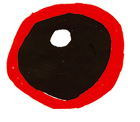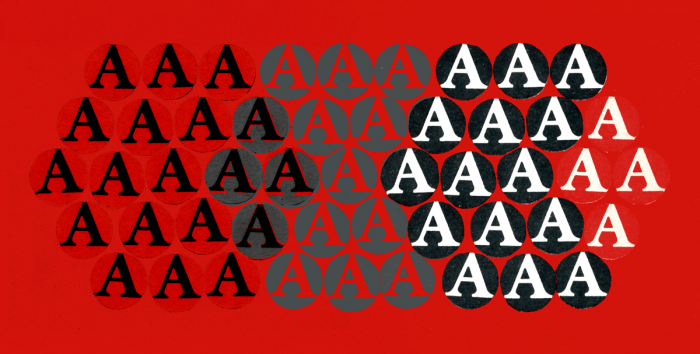The history of the Gruppi Anarchici Federati (GAF) is an integral part of the history of the Italian anarchist movement in the second half of the twentieth century (see Giampietro N. Berti, Contro la storia. Cinquant’anni di anarchismo in Italia, 1962-2012, Biblion, Milan, 2016). Specifically, it is the history of a network of anarchist groups, mostly from northern Italy, active between the early 1960s and the late 1970s, taking on various names over time. While the collective history of the federation ends in 1978, the history of the groups and individuals who made it viable has continued to the present day, albeit in different forms.
In fact, GAF decided to disband after an experience of about ten years because its militants came to the unanimous conclusion that that kind of political organization and approach to social action had exhausted its driving force (see the self-dissolution document). The belief is that militancy needs to be radically rethought in a world in which the twentieth-century “grand narratives” (with its important social spillovers) are rapidly being exhausted. Constructing another “militant” imaginary, inventing new forms to activate in the present the methods and values of anarchism beyond historical contingencies, seem as urgent as ever. And it is in this quest that GAF groups and individuals are launching themselves in a history that for the most part remains collective over time, even without the officialdom of a federative structure.
In this sense, a relevant role is played in the following decades by the initiatives that GAF established in the meantime: the monthly magazine “A rivista anarchica” (1971 to 2020), which was the most widely circulated publication of the Italian movement throughout its period of activity, the international magazine “Interrogations” (1974-1979) and the Italian “Volontà” (between 1978 and 1996), the Antistato editions (1975-1985) and then the elèuthera editions (1986- still active), the Utopia bookstores in Milan and Venice, the Ateneo degli Imperfetti in Marghera (2000- still active), and our own Centro studi libertari/Archivio Giuseppe Pinelli (founded in 1976 and still active), with its international network of contacts. They are mostly publishing projects, but act as meeting and coordination centres among the various social realities and souls of the anarchist movement.
In summary, GAF - one of the three national federations present at that time, along with the Italian Anarchist Federation (FAI) and the Gruppi di Iniziativa Anarchica (GIA) - constitutes itself on the basis of certain characteristics that mark a difference with the other federations, yet without antagonism with the other groups. It is a different way of conceiving anarchist organization compared to a synthesis federation such as the FAI or a federation often called “anti-organizing” by its critics such as the GIA. In contrast, GAF poses itself as a trending federation based on a network structure composed of “affinity groups” (see the GAF Programme for a more detailed discussion).
Apart from having found themselves willingly or unwillingly at the centre of those subversive plots better known as the “strategy of tension” - Giuseppe Pinelli was one of the federation's most active and well-known militants - and thus at the centre of the subsequent counter-information campaign, an important feature of the work carried on by the GAF refers to a collective effort of theoretical reworking. For the young anarchists of those decades, rethinking anarchism in light of the momentous historical changes that followed World War II is indeed a keenly felt need. While fully recognizing themselves in the anarchist tradition, the militants gathered in GAF felt the urgency of historicizing classical anarchism and re-inventing ways of acting in view of reflections that start from the contemporary world. It is not by chance that one of the first collective works will be called A New Analysis for the Strategy of All Time.
Therefore, in this Fund dedicated to GAF are grouped various aspects of their activities, both the more militant and the more theoretical ones, starting with a public act that was in its own way the founding act of this anarchist area, namely the kidnapping in Milan in 1962 of Spanish vice-consul Isu Elias in aid of the anti-Francoist struggle in Spain. The young anarchists who carried out that act were in fact the constitutive core of the future GAF.
In order to make the uploaded materials more usable, it is useful to point out the various names GAF assumed over time. The federative network was initially called Gruppi Giovanili Anarchici Federati (1965-1968), later taking the name of Gruppi Anarchici Federati (1969-1978). Even in the specific Milanese reality, the group took on various names (sometimes replicated in other cities, e.g., Turin), which in chronological order are as follows: Gruppo Giovanile Libertario, then Gioventù Libertaria, then Gruppo Anarchico Bandiera Nera and, at the same time, since 1973, also Gruppo Milano 73 (a duplicate name used to limit the number of activists and in order to allow everyone to participate).
It should also be pointed out that many of the documents available here are largely traceable to the activities of Milanese groups simply because the documentation possessed comes mainly from this geographical reality, but it should always be kept in mind that the history of GAF is certainly a local history but is also and especially a collective history.




